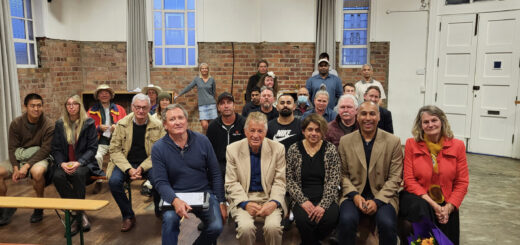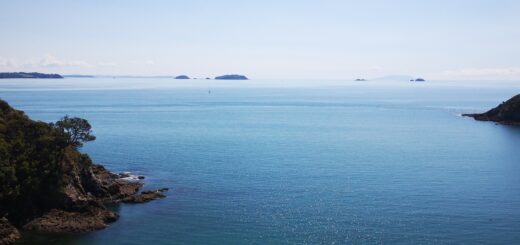Chunuk Bair Day speech
Chunuk Bair centenary memorial service
Michael Lee Auckland Councillor and chairman of the Auckland Council World World One Centenary Memorial Working party
Today, just over one year into the centenary of the Great War we commemorate a most important war anniversary for New Zealand. The capture of Chunuk Bair was one of New Zealand’s greatest feats of arms.
Three months after the ANZAC landings in April 1915, after the failed offensive at Cape Helles, the Gallipoli campaign had become stalemated. An audacious plan to outflank the Ottoman Turkish defenders by seizing the heights of the Sari Bair range was conceived. From these heights the narrows of the Dardanelles, the seaway to Constantinople and to the Black Sea could be seen and dominated. While the August offensive was to be undertaken by the British and French armies, soldiers of many nations were involved. apart from New Zealanders and Australians there were Irish, Welsh, Indian, English, French, French African colonial troops and the French Foreign Legion. The task of spearheading the assault though was given to the New Zealanders.
The offensive began on 6 August when British, French, Irish and Indian troops at the cost of heavy casualties launched attacks at Cape Helles. French troops also attacked Turkish positions on the Asian side of the Dardenelles; and the British landed troops at Suvla Bay to the north of ANZAC cove. At the southern end of the ANZAC perimeter, Australian infantrymen, climbed out of their trenches and charged the Turkish machine guns at Lone Pine. Nearly 2000 Australians were to become casualties at Lone Pine alone.
That night the main attack got underway, spearheaded by 1600 men of the Auckland, Wellington, Canterbury and Otago Mounted Rifles and the 480-man Maori contingent. Their job was to clear out the Turkish defensive positions guarding the approaches to the heights. The next morning with four out of the five strong points taken, they were relieved by the NZ Infantry Brigade, which was to scale the final kilometre to the summit of Chunuk Bair.
Meanwhile down below, at the Nek, Australian light horsemen (like the NZ mounteds their horses were left back in Egypt), charged in three waves; 375 light horsemen were killed sacrificing themselves in this way. The episode is immortalised in the closing scenes of the 1981 movie ‘Gallipoli’.
Then ordered to attack at mid-morning, three companies of the Auckland battalion assaulted up the slopes. Despite taking heavy casualties, (300 men, nearly half the battalion was wiped out), the Aucklanders captured the position called ‘the Pinnacle’, just 200 metres from the summit. The Wellington Battalion was ordered up next but its commander Lieutenant-Colonel William Malone refused to send his men, as he put it to ‘commit suicide’, arguing for a night attack instead. A row ensued. Malone got his way.
In the pre-dawn darkness the attack went in and as the sun rose 700 or so Wellingtons assisted by Auckland mounted riflemen and elements of the Gloucester and Welsh Pioneer regiments captured the summit. The Dardanelles and victory was in sight. Malone’s men now had to hold against the inevitable Turkish counterattacks.
The late Maurice Shadbolt was inspired by the drama and heroism of the Chunuk Bair saga to write his famous play ‘Once on Chunuk Bair’. In his book ‘Voices of Gallipoli’ (1988), Shadbolt quoted the decorated Gallipoli & Western Front veteran Ormond Burton. After the War Burton became a Methodist minister and an outspoken peace activist. (Some of you may remember the old man in the 1960’s and early 70’s preaching and leading marches against the Vietnam War). Burton was also an historian, rated both as a soldier and as a writer by his commander Major-General Sir Andrew Russell.
In his 1935 book chronicling the history of the NZ Army in the Great War, ‘The Silent Division – New Zealanders at the front 1914-19’, Burton wrote of Chunuk Bair: ‘Every man on that ridge knew that the thin line of New Zealand men was holding wide open the door to victory, and that it must not close – must not.’
All that day, 8 August, New Zealand-led forces on Chunuk Bair, principally the Wellingtons, running low on ammunition and water, fought off wave after wave of Turkish counter-attacks. Personally led by Malone they mounted desperate bayonet charges to push back the enemy. Burton wrote: ‘How men died on Chunuk Bair was determined by how men and women had lived on the farms and in the towns of New Zealand.’
By nightfall, all but 70 of the 700 or so men who had captured the heights that morning had been killed, Malone with them. The exhausted survivors were finally relieved by the Wellington Mounted Rifles and the Otago Battalion.
The New Zealanders held on for another long day of grim fighting until relieved that evening by two battalions of British troops that had come up from Suvla.
But within hours a massive counterattack by five thousand Turkish troops organised by their commander Mustafa Kemal, (later Kemal Ataturk, the first president of modern Turkey), swept them from the summit.
Again it was only the grim defence of New Zealand troops that stopped this human wave from sweeping all the way to the beaches. 9000 Turks had been killed or wounded in the fighting around Chunuk Bair.
But for the Allies, with the loss of the heights, chance of victory at Gallipoli, the capture of Constantinople; the dream of ‘knocking Turkey out of the war’, linking hands with Russia and a quick end to the War was all over.
Instead Great War would drag on for more than three more years, millions more would die. The heroism and sacrifice of our young soldiers, it could be concluded then, was all for nothing. But Ormond Burton for one, would not accept this. He saw at least some good in it.
He wrote: ‘The way men died on Chunuk Bair is shaping the deeds yet to be done by generations still unborn in this land of ours…When the August fighting died down there was no question but that New Zealanders had commenced to realise themselves as a nation.’
It is important if those bloody and desperate events are to have any meaning, the present generation of New Zealanders must ensure that Chunuk Bair, and its significance for this nation is not forgotten; and that the memory is passed on to future generations.
Let us do so, so that the heroic sacrifice of those brave young NZ soldiers, pakeha and Maori – indeed the soldiers of all those nations in that battle 100 years ago was not completely in vain.
To this end I am reminded of the words of the 18th century statesman Edmund Burke: ‘Our society is a contract between three interested parties, the dead, the living and the unborn.
As part of our duty to honour the contract Burke spoke of, the Auckland Council, as announced by the Mayor Len Brown on ANZAC Day, with the help of the NZ government, has pledged to build and complete by 2018, the centenary of the ending of the Great War, a memorial to honour not just the fallen, but all those generations of Aucklanders affected by the tragic consequences of that conflict – and by wars in general.
After much thought we have decided not to embark on a separate new monument – the Auckland War Memorial Museum and cenotaph must be one of the most superb war monuments ever built. Rather it is to complete broadly the scheme what was envisaged in the 1930s by that generation of Aucklanders most affected by the War, the people who built this Museum and cenotaph.
Our preference is for something simple and understated. Integrated into the Museum complex it is to form what is best described as a pedestrian or processional way, on the northern grassy slopes before the Museum, aligned on the central axis of the Museum, designed to enable both casual pedestrian and formal ceremonial access from Domain Drive, where there will be an entrance ‘contemplative feature’ connected to the pathway progressing up the slopes to the Court of Honour and the War Memorial Museum.
It is still early days, but engagement with stakeholders will commence shortly and key stakeholders and the public will be kept up to date on progress throughout the project. A design brief has been completed; expressions of interest are soon to be sought from professional designers.
The selected designers will provide concept designs which are expected to be provided by the end of this year, and will be made public at that time. We are requiring proposed centenary memorial must respect, harmonise with and complement the Auckand War Memorial Museum building.
With this announcement we renew the pledge of remembrance bequeathed to us 100 years ago and pay our homage to the heroism of all those young men in the Battle of Chunuk Bair and in the fighting yet to come.
We will remember them.







